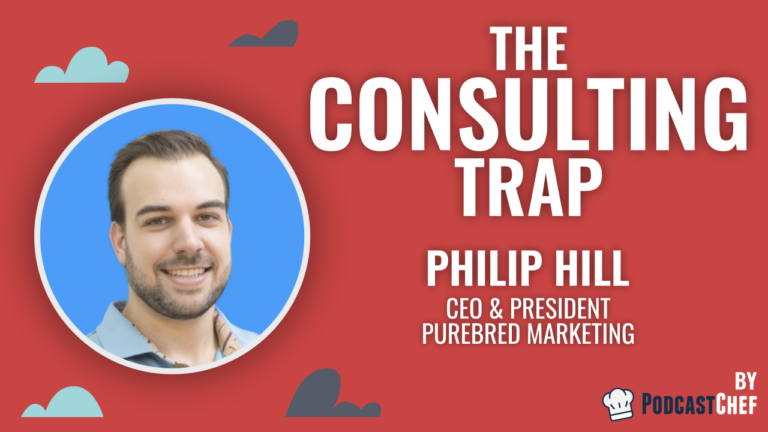This episode, Purebred Marketing’s CEO Philip Hill talks about the different stages of customer brand awareness, the benefits SEO has over paid ads, and the difference between SEO and content generation.
Philip Hill is the CEO & President of Purebred Marketing and is a customer acquisition specialist, and Google Ads & SEO expert.
Philip has built numerous 6-figure followings on social media and has helped countless businesses build brand awareness online.
He now helps companies create and execute unique goal-oriented strategies to ignite growth in their most profitable revenue streams by combining a data-driven approach with an overlaid human element. Here are a few of the topics we’ll discuss on this episode of The Consulting Trap:
- How D2C marketing is different from B2B marketing.
- Ways the D2C space can inform the B2B sales cycle.
- The stages of customer awareness and how to monitor their journey.
- SEO vs paid ads.
- The benefits of using paid ad traffic.
- How SaaS companies can get more traffic.
- The difference between SEO and content generation.
Resources:
Connecting with Philip Hill:
Connecting with the host:
Quotables:
- 5:31 – “You have to have pieces of your funnel that are triggered based on previous interaction, so you’re triggering you know they’re only getting this if they saw this, if they watched X amount of this if they landed on this page, and this whole journey we have to educate our customers on because they think like we got in front of this many people and only this many people bought and I’m like everybody only saw it one time what do you expect?”
- 18:24 – “Google wants to see that every page you have is about a very specific topic and so they know that whatever that search query is being responded about to this very specific topic someone’s looking for and so if you have five services you offer, so you have your homepage and 5 services you’re not going to rank just for you primary keyword phrase Google’s algorithm has natural language processing all through it that it really understands what your pages are talking about so there’s going to be synonyms for that, they’re going to rank as well but once you get passed those the only way to get more traffic is not to put more keywords in those pages it’s to create new pages.”
- 22:44 – “We have a 4 billion company dollar that we work with, it’s a B2B company we make up 4 percent of their marketing budget, all we do is SEO, they send a ton on paid a ton on TV, we make up 4 percent of their marketing budget and we drive the new stat was 39.7 so 4 percent of their marketing budget we drive 40 percent of their leads and it’s because of how economical SEO is, it’s just making it through that little gap at the beginning do you have the cash flow to make it through 18 months where your not getting anything back and if you can withstand that you’re going to make exponentially more than any other channel you have.”
- 29:55 – “There’s basically three buckets for SEO you have your own page, so that’s going to be relevance what are the search engines seeing that this page is about and the keywords that should be ranked as a result of that the next is technical SEO so technical SEO is how easy is it for search engines to index and crawl your website is it technically friendly basically is the backlink easy for search engines to index and crawl and then it’s like a healthy site that they’re comfortable sending users to and then the last is offsite SEO, so offsite SEO, for the most part, there’s more to this but from a high-level, its backlinks coming to your site and they basically view links as reviews.”
- 33:11 – “You have to understand your customer, what their pain points are inside and out you think you have a solution but what does that solution solve, so really understand your customer, what those pain points are and what they need.”


